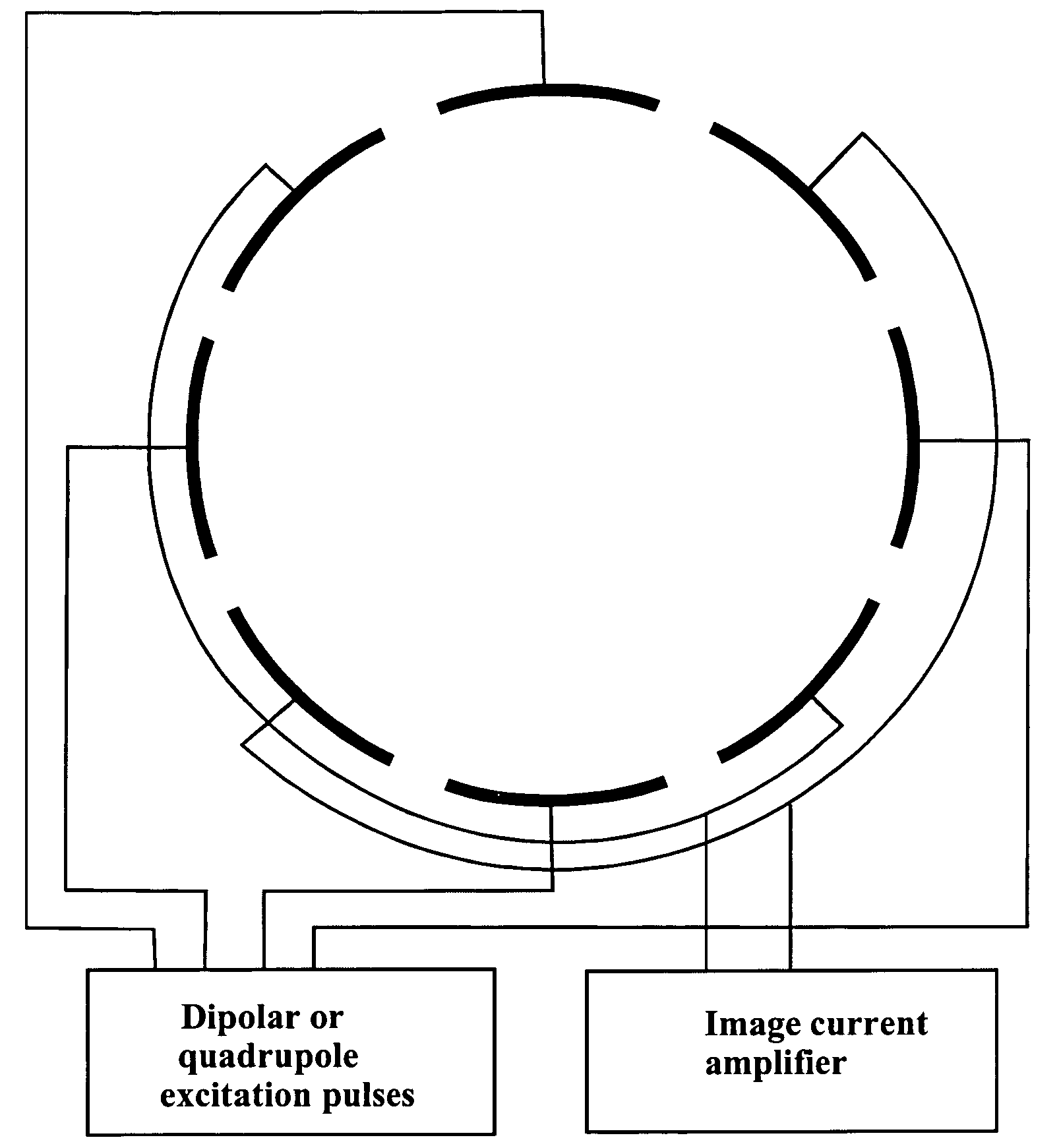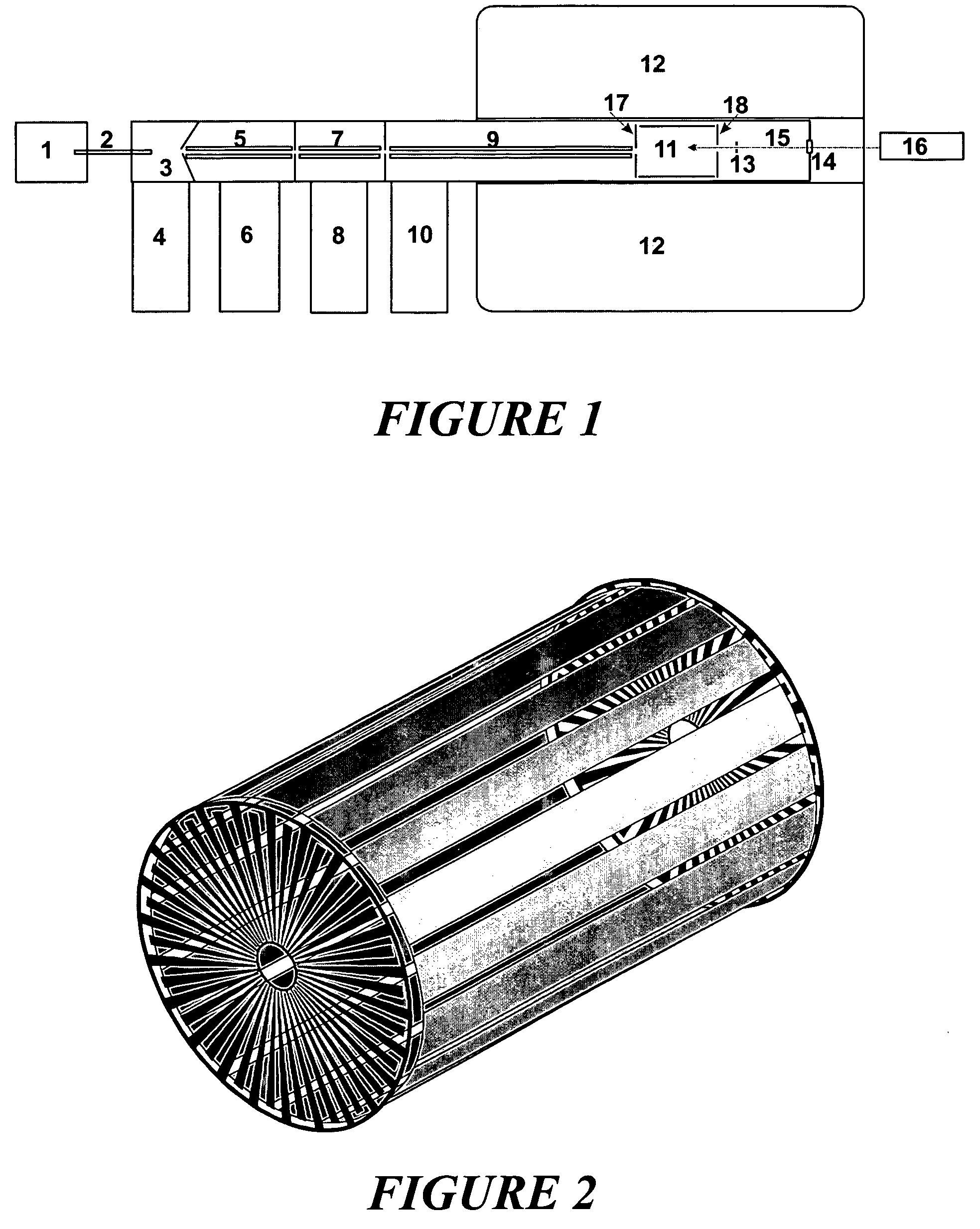Measuring methods for ion cyclotron resonance mass spectrometers
a mass spectrometer and cyclotron technology, applied in mass spectrometers, instruments, separation processes, etc., can solve the problems of reducing the usable volume of the measuring cell, the electric field outside the axis of the measuring cell is more complicated, and the frequency shift of the cyclotron frequency, so as to facilitate the detection of image currents
- Summary
- Abstract
- Description
- Claims
- Application Information
AI Technical Summary
Benefits of technology
Problems solved by technology
Method used
Image
Examples
Embodiment Construction
[0041]The operation and function of an ion cyclotron resonance mass spectrometer can be explained in greater detail using FIG. 1. The ions are, for example, generated by electrospray ionization in an out-of-vacuum ion source (1), and introduced together with ambient gas through a capillary (2) into the first stage (3) of a differential pump system, which comprises the chambers (3), (5), (7) and (9) and is evacuated by the pumps (4), (6), (8) and (10). The ions are captured by the ion guides (5), (7) and (9) and guided to the measuring cell (11), where they are confined. The measuring cell (11) usually comprises four longitudinal excitation and detection electrodes and two trapping electrodes (17) and (18), each of which has a central aperture. The measuring cell is located in the homogeneous region of a strong magnetic field, which is generated by superconductive coils in a helium cryostat (12) and has a magnetic field strength of high constancy. Electrons can be generated by a ther...
PUM
 Login to View More
Login to View More Abstract
Description
Claims
Application Information
 Login to View More
Login to View More - R&D
- Intellectual Property
- Life Sciences
- Materials
- Tech Scout
- Unparalleled Data Quality
- Higher Quality Content
- 60% Fewer Hallucinations
Browse by: Latest US Patents, China's latest patents, Technical Efficacy Thesaurus, Application Domain, Technology Topic, Popular Technical Reports.
© 2025 PatSnap. All rights reserved.Legal|Privacy policy|Modern Slavery Act Transparency Statement|Sitemap|About US| Contact US: help@patsnap.com



